Code Grooming: Principles for Long-Term Software Health
We've all been there before whether you're working on a fresh project that you built from scratch or maintaining a brownfield project, and realising it's become a tangled mess. Over time, even code written with good intentions can become an unmanageable, complex mess, if not properly maintained. Like an overgrown garden, these codebases become difficult to navigate, update, and maintain. The truth is, software development is a journey of continuous learning. What seemed like the perfect solution a year ago might now appear clunky and inefficient. Lets face it future you will always be more knowledgeable and experienced than the present you. Your future self, armed with more experience, will inevitably find improvements to code that past you wrote. Code grooming is essential as software engineers, adding new features is nice and important too, but you need to ensure that your existing code is clean, efficient and follows the latest standards, sure it works, but why leave it at that when you can make it better. Obviously I'm not asking you to update your codebase on a weekly basis or even biweekly, that would be impractical, as professional software engineers we have to think of the businesses need first, Nevertheless we need to create time to groom our codebase, to review past decisions, if they're are not up to par improve them. There are principles you should adhere to or follow that make the process of updating a codebase easier and not seem so daunting, you want to make life a bit easier for the next guy that has to work on the project, these are a few of them; Minimize Interdependence (Low Coupling, High Cohesion): Instead of tightly coupled components that trigger cascading changes, aim for independent modules. Changes in one module should minimally impact others. Stick to a Style (Coding Standards): Maintaining a consistent and readable codebase is paramount for long-term health and collaborative efficiency. To achieve this, establish and enforce coding standards using tools like linters (e.g., ESLint), formatters (e.g., Prettier), and style guides. .Having consistent naming conventions, formatting, and overall structure greatly enhance readability, simplifying collaboration amongst developers. To make sure these standards are consistently applied, integrate these tools into your CI/CD pipeline, automating style checks and preventing deviations from the established guidelines. Explain the 'Why' (Helpful Comments): Comments should explain the "why" behind the code, not just the "what." Document architectural decisions, complex logic, and edge cases. Skip the comments that just tell you exactly what the code does, we can already see that. Write tests: no matter how you sweat it the best guarantee that a pice of code works is if the tests written for it are passing, tests are important for you as a developer because how would you know that your updates didn't break the codebase if there are no existing tests. Stay Secure: Don't forget to check for security issues when you're cleaning up your code. That means adding security checks to your process and keeping all those extra code bits (dependencies) up-to-date. Fix any security problems as soon as you find them. Doing this helps keep your code safe and prevents potential problems. These are just a few ways to keep your codebase healthy and make future updates easier. Remember, maintaining existing code is just as important as writing new features. It's about building sustainable software.

We've all been there before whether you're working on a fresh project that you built from scratch or maintaining a brownfield project, and realising it's become a tangled mess. Over time, even code written with good intentions can become an unmanageable, complex mess, if not properly maintained. Like an overgrown garden, these codebases become difficult to navigate, update, and maintain.
The truth is, software development is a journey of continuous learning. What seemed like the perfect solution a year ago might now appear clunky and inefficient. Lets face it future you will always be more knowledgeable and experienced than the present you. Your future self, armed with more experience, will inevitably find improvements to code that past you wrote.
Code grooming is essential as software engineers, adding new features is nice and important too, but you need to ensure that your existing code is clean, efficient and follows the latest standards, sure it works, but why leave it at that when you can make it better. Obviously I'm not asking you to update your codebase on a weekly basis or even biweekly, that would be impractical, as professional software engineers we have to think of the businesses need first, Nevertheless we need to create time to groom our codebase, to review past decisions, if they're are not up to par improve them.
There are principles you should adhere to or follow that make the process of updating a codebase easier and not seem so daunting, you want to make life a bit easier for the next guy that has to work on the project, these are a few of them;
-
Minimize Interdependence (Low Coupling, High Cohesion):
Instead of tightly coupled components that trigger cascading changes, aim for independent modules. Changes in one module should minimally impact others.
-
Stick to a Style (Coding Standards):
Maintaining a consistent and readable codebase is paramount for long-term health and collaborative efficiency. To achieve this, establish and enforce coding standards using tools like linters (e.g., ESLint), formatters (e.g., Prettier), and style guides. .Having consistent naming conventions, formatting, and overall structure greatly enhance readability, simplifying collaboration amongst developers. To make sure these standards are consistently applied, integrate these tools into your CI/CD pipeline, automating style checks and preventing deviations from the established guidelines.
-
Explain the 'Why' (Helpful Comments):
Comments should explain the "why" behind the code, not just the "what." Document architectural decisions, complex logic, and edge cases. Skip the comments that just tell you exactly what the code does, we can already see that.
-
Write tests:
no matter how you sweat it the best guarantee that a pice of code works is if the tests written for it are passing, tests are important for you as a developer because how would you know that your updates didn't break the codebase if there are no existing tests.
-
Stay Secure:
Don't forget to check for security issues when you're cleaning up your code. That means adding security checks to your process and keeping all those extra code bits (dependencies) up-to-date. Fix any security problems as soon as you find them. Doing this helps keep your code safe and prevents potential problems.
These are just a few ways to keep your codebase healthy and make future updates easier. Remember, maintaining existing code is just as important as writing new features. It's about building sustainable software.




















































%20Abstract%20Background%20112024%20SOURCE%20Amazon.jpg)






















































































































![[The AI Show Episode 142]: ChatGPT’s New Image Generator, Studio Ghibli Craze and Backlash, Gemini 2.5, OpenAI Academy, 4o Updates, Vibe Marketing & xAI Acquires X](https://www.marketingaiinstitute.com/hubfs/ep%20142%20cover.png)
























































































































































































































































-Nintendo-Switch-2-–-Overview-trailer-00-00-10.png?width=1920&height=1920&fit=bounds&quality=80&format=jpg&auto=webp#)





















_Anna_Berkut_Alamy.jpg?#)













































































































![YouTube Announces New Creation Tools for Shorts [Video]](https://www.iclarified.com/images/news/96923/96923/96923-640.jpg)





































































![[Weekly funding roundup March 29-April 4] Steady-state VC inflow pre-empts Trump tariff impact](https://images.yourstory.com/cs/2/220356402d6d11e9aa979329348d4c3e/WeeklyFundingRoundupNewLogo1-1739546168054.jpg)





























































